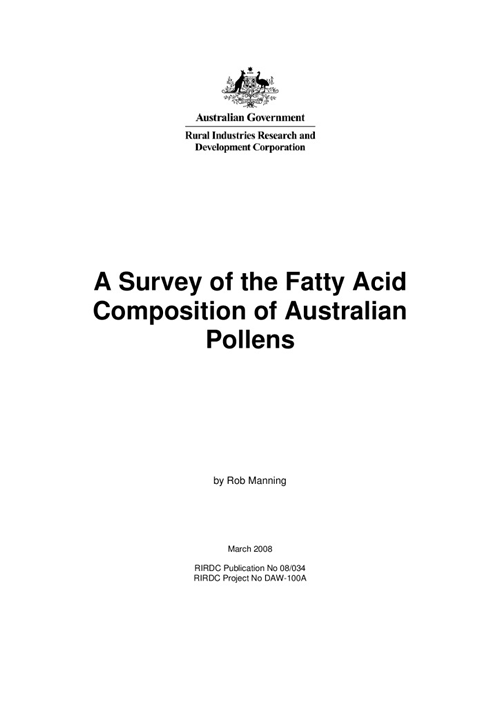This report improves current knowledge of fatty acids in pollens from some of the major plant resources around Australia. This information can assist the industry in formulating and refining supplementary feedstuffs for honey bees.
Flowers produce nectar and pollen. To honey bees the most important is pollen as it contains the protein, lipids and the bulk of the mineral supply. Existing knowledge of the chemical makeup of pollen is well established for amino acids and minerals but there is a paucity of knowledge about fatty acids (lipids).





